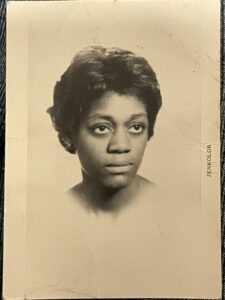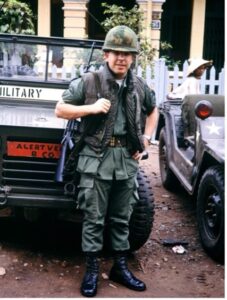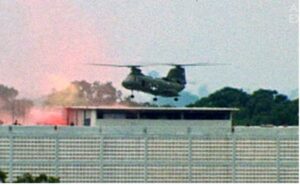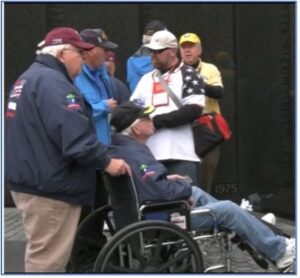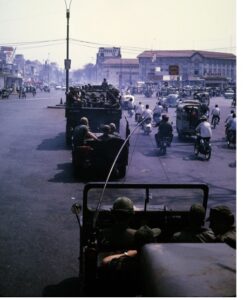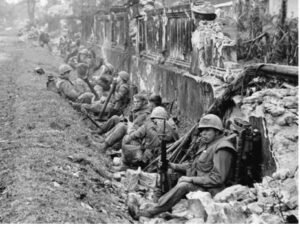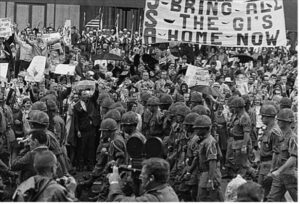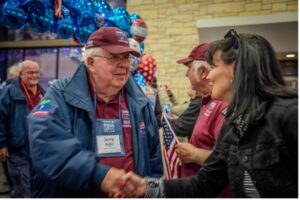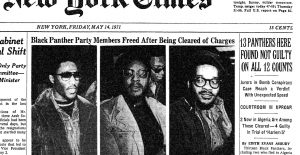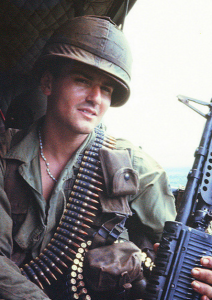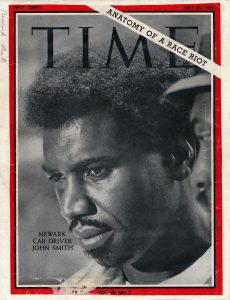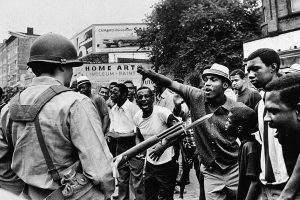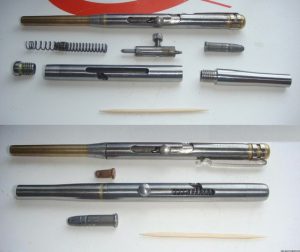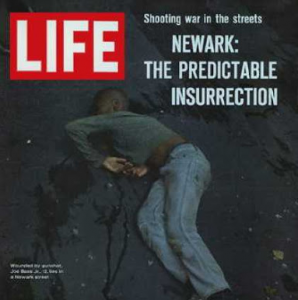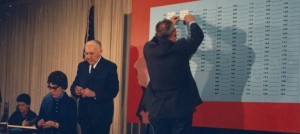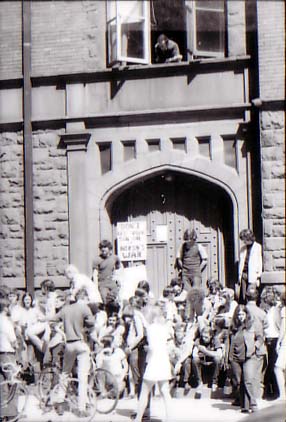For modern Americans it is unthinkable to live in a society where racial segregation was the norm. However, for Alice Littlefield (nee Russ) segregation was her reality growing up in the Jim Crow South, “School was always separated, church was always separated” she explained, “But for the most part everybody sort of lived in peace. This was the way things were and [there were things] you didn’t do, like… didn’t even think about doing”.[1] Her reality changed in the fall of 1959 when she entered her freshman year at the newly integrated Women’s College of the University of North Carolina at Greensboro. The university had integrated in September 1956 following the 1954 Supreme Court Case—Brown vs. Board of Education and subsequent faculty resolution discussions at the college. Brown v. Board of Education ruled that segregation of public schools was unconstitutional; following this decision the Faculty Council of the Woman’s College of the University of North Carolina had internal conversations about the possibility of integration at the institution. In December of 1955, the council agreed to desegregate—thanks due in part to the advocacy of philosophy professor Dr. Warren Ashby.
As the sociopolitical tides were turning in favor of racial equality, so too was the pushback. The transition from an all-white campus to a more diverse population proved to be tense. As H.W. Brands states in his book American Dreams: The United States Since 1945, “The most contentious issues in American life continued to center on race.”[2] At the heart of the issue, according to Littlefield was American culture. Specifically, that the pushback against integration was rooted in the misguided belief that preserving American culture partially depended on the systemic disenfranchisement of African Americans in the United States.
Foundationally, the United States as a settler-colonial state began with an economy which revolved around the exploitation of enslaved African labor through the mechanism of chattel slavery. Thus, the shifting societal position of descendants of these enslaved Africans challenged the backbone of America’s foundation and its monetary success. The anxieties associated with the possible sociopolitical ascension of Black Americans through legal means manifested themselves through different avenues at the Woman’s College. Particularly through the rhetoric of Littlefield’s professors and classmates as well as discriminatory housing policies. In her interview, Littlefield spoke about how professors implied or explicitly said that black people would not be able to succeed academically because of their race. “That was one of the history professors, he announced that no black person could pass his classes”; continuing she told me that her academic advisor, Dr. Anderson confided in her saying, “…they knew the…teachers were prejudiced. But they [the faculty] could not do anything about it.”[3] The numerous instances of discrimination on campus contributed to Alice Littlefield’s decision to become involved with the Civil Rights Movement.
Fortunately, the Woman’s College was located at a hotspot of civil rights advocacy. In the spring semester of Littlefield’s freshman year, the famous Woolworth’s sit-ins occurred. In February of 1960, four black students from North Carolina A&T sat down at the lunch counter at Woolworth’s. This protest was significant because it was a nonviolent protest that displayed the nonsensical segregation policy within the store, which allowed African Americans to be patrons but not sit down in the store. In the following weeks after the initial Woolworth’s sit-ins many more popped up in North Carolina, and more broadly in the South. Brands briefly mentions these sit-ins, writing that “…the movement accomplished its immediate purpose: to bring the spotlight of national publicity upon the Jim Crow system.”[4]
In Littlefield’s case, participating in the sit-ins was a matter of self-preservation. Although she had never personally faced any mortal danger in relation to her racial identity, the emotional toll of constant derision, social isolation, and the institutional complacency in her continued subjugation was detrimental. For example, Littlefield confided that she had developed a stutter during her college career due to the mistreatment she faced from her professors.[5] Further, she emphasized the importance of paving the way for future generations to feel comfortable participating more broadly in American life as Black Americans.
When Alice Littlefield was entering university, she remembers being told that her attendance was not wanted, but rather required because of the change in federal policy positions in favor of integration. According to a local newspaper article from 1956, the acting chancellor of the Woman’s College, “admitted black students were admitted solely due to a Supreme Court ruling”, and that “the students were deserving of fair treatment”.[6] Littlefield’s activism was focused on establishing equal protection under the law for all people. This legal change came a year after her graduation from the Woman’s College with the passing of the Civil Rights Act of 1964. This law prohibited discrimination based on race, color, religion, sex or national origin in public accommodations and federal programs.[7] When Littlefield looks back on her time as a young activist, she acknowledges how dangerous her advocacy was for that period, “Usually when they [opponents of civil rights] take retribution it’s against the whole group, the whole town. We were a threat to everybody.”[8]
The contributions of Alice Littlefield, and people like her are immeasurable. Her actions—participating in sit-ins, forfeiting a typical college experience, helping integrate her university—all had an impact on the subsequent experience of all Americans. As a protestor, Alice Littlefield laid the groundwork for future generations on how to advocate for the change you want to see. Her advocacy helped to change national attitudes surrounding the societal place of African Americans, not just as laborers, but as students, and as people. Alice Littlefield’s actions made it possible for students like me to attend a university like Dickinson College. For that I am forever grateful.
[1] Alice Littlefield, Interview, December 1, 2023.
[2] Brands, American Dreams: The United States Since 1945, (New York: Penguin Press, 2010), 108-109.
[3] Littlefield, FaceTime Interview.
[4] Brands, 109.
[5] Littlefield, FaceTime Interview.
[6] “Negro girls were ‘not sought’ for college, Dr. Pierson says”
[7] “Legal Highlight: The Civil Rights Act of 1964”, U.S. Department of Labor, accessed December 10, 2023. https://www.dol.gov/agencies/oasam/civil-rights-center/statutes/civil-rights-act-of-1964#:~:text=In%201964%2C%20Congress%20passed%20Public,hiring%2C%20promoting%2C%20and%20firing.
[8] Littlefield, FaceTime Interview.
Interview subject:
Alice Littlefield, is a retired Child Protective Services (CPS) employee in Washington, D.C. She attended her undergraduate institution, The Woman’s College of North Carolina Greensboro, from 1959-1963 and participated in countless civil rights protests, including sit-ins during her attendance as a student.
Transcript:
Q: I have never done a professional interview before. Have you ever been professionally interviewed?
A: No, but you know I’m a social worker and interviewing is one of our tools of the trade.
[…]
My name is Amina West. I am currently a junior at Dickinson college—an American Studies major, possible Russian double major. I don’t know yet. I am interviewing my grandmother Alice Faye Russ Littlefield.
Q: So, Grandma, can you tell me a little bit about your childhood, what was it like growing up in the Jim Crow South?
A: It was… [laughs] it was okay. I wasn’t used to anything else really. I always lived in the South. When I was very young, we lived in a place called Newport News, Virginia. Which is the South. [I] don’t remember much of that. We moved to North Carolina when I was in about the fourth grade. There was no black ghetto or black neighborhood, you lived wherever you could find housing, for the most part. You couldn’t do things like–I’m trying to think about this… People didn’t bother you usually.
Q: So, would you say it was almost self-segregated or are you saying in the interactions black people had with white people…[mutters]; How would you describe it?
A: Well in some places you were separated. School was always separated, church was always separated. But if you had to do other things, like for example, my grandparents worked on a farm so sometimes black and white neighbors did work. Like tobacco…there were women’s and men’s jobs, and everybody would participate in them. The movies, when we went to the movies the black people sat in the balcony, uh the hospital. There was one floor, I don’t care what you had, all the black people were on one floor in the hospital. But stores, you could go into stores. Didn’t go to restaurants and food places where you ate in.
Q: Could you [get] takeout?
A: Well, you know nobody was really “taking out” [laughs].
Q: Oh y’all didn’t have take out yet?
A: [laughs] Eating out wasn’t a big thing then. Uh yeah.
Q: Would you say that you faced any racial terror? I remember when we visited great-grandma Glovenia’s house there was a KKK billboard. Did you ever feel afraid for your mortal safety?
A: No. We laughed at that sign, by the way. We did interact with white kids sometimes. And as I said, there was no one black neighborhood, they were sort of scattered around wherever you could live. And we lived in a neighborhood where we had to walk through white neighborhoods to get to the black school. And you know we’d fight and throw rocks, nothing serious. You know, it was sort of proforma, we gotta do this [laughs].
Oh, ok [laughs]
A: [continuing] Call names, I won’t repeat any of that stuff some of it was vulgar.
[laughs] STOP! [jokingly]
A: [laughs] It was true though. And parents didn’t approve of it, they would get you. But for the most part everybody sort of lived in peace. This was sort of the way things were and [there were] things you didn’t do, like you didn’t even think about doing…so…
Q: So it was like…because you hadn’t experienced anything else it wasn’t out of the ordinary. Sort of like me having the internet, I’ve never lived in a world without the internet.
A: Correct.
Q: Okay. Why did you choose Woman’s College of the University of North Carolina Greensboro?
A: I didn’t.
Q: Why did you want to go to college?
A: I’ve always been curious and done things and explored and I’ve read a lot. I knew that in order to get ahead and do things you needed to get a college education. Uh, I was real good in school, by the way…uh…I had all of the—we used to get awards—I’d get the award for everything in my class.
Q: The kids hated you? Were you the type of kid to say, “Teacher there was homework?”, was that you?
A: You know, all of us were… we didn’t have that many outlets. People were very proud of making good grades in school. And now you know you think you have a class full of dummies? We would have just one.
[laughs]
A: People were attentive and uh, you asked me about my childhood earlier?
Yeah.
A: Activities were centered around the school and around the church. So, you were really good—anybody that could be good was good.
Q: Why did you choose the Woman’s College?
A: I didn’t.
Q: What do you mean?
A: [laughs] I applied to the University of North Carolina Chapel Hill and they sent my letter to the Woman’s College of North Carolina, which was located in Greensboro. What I didn’t know was that…at that time the University of North Carolina Chapel Hill did not…was not admitting women. They started admitting women at the same time that I started at the Woman’s College. They didn’t allow women to live on campus, if you lived in Chapel Hill or you could be a day student you could go. If you weren’t you didn’t.
Q: Is it because they didn’t have coed dorms yet?
A: I don’t know why. You know it is one of the oldest state-funded universities in the United States?
No, I didn’t know that.
A: It was just a male school I suppose.
Q: Interesting. Why did you want to go to that kind of school? A state school instead of a historically black institution? What was your rationale?
A: You know, I really didn’t have one and nobody discouraged me at home because they didn’t think I would get in. And they got really upset that I did. The school tried to talk me out of it because they thought there would be repercussions from the white community. But the only repercussions\ was that the bank gave the valedictorian and salutatorian at each high school a four-year scholarship and they refused to give me mine [scholarship]. But my parents said it was fine don’t worry about that, worry about getting in.
Q: Why did you choose biology as a major? What were you hoping to do with that?
A: I thought I wanted to be a doctor, I also liked science. I told you I was very curious, and I was in to everything. So, I chose biology.
Q: What years did you attend Woman’s College?
A: All four years. I went from 1959-1963.
Q: You entered the Woman’s College during a time of transition, four years prior the first black students were admitted and then a year after you graduated the school became coed. Could you feel the societal changes at the time you were attending school?
A: Yes. It was sort of rocky. I was, I had gone to a different part of the state and customs and cultures were a little different. In the class I was in, we originally had five black students and one dropped out almost immediately; so, there were four. I didn’t know the town students but there were approximately 20 black students on campus. I was the only black person majoring in science, so I was rarely in class with another black person. That was interesting.
Q: Was that a culture shock? Going from an all-black school to then being in an all white environment?
A: It wasn’t necessarily a culture shock. But initially it was nobody to study with, nobody to ask for help. It was just different.
Q: Did you feel like people were standoffish?
A: I had sort of a double whammy. Not only was a going to a desegregated school and among the black students I was the only one from a rural area. There was the “You’re country”, [I] didn’t have the same culture as them…Well let me tell you how it worked. We were segregated in the dorm, all of us—each class was in a dorm. I was in the dorm with the four [black] freshman when I went but our dorms were divided up. There were 16 rooms in a block we, the four of us, got all 16 rooms nobody else was there. It was that way because it was divided by bathrooms. They [the administration] didn’t want us to use the same bathrooms [as the white students]. The funny thing is that people were used to having one or two people in a room, we only used two of the rooms.
Q: So they were all squished together like sardines?
A: Yes, there were three or four of them in a room and they were annoyed. They had to get their parents’ permission to move in. At first, we got two Jewish girls and then we got one “good God-fearing Presbyterian” girl—and I’m saying it like that because she kept reminding us that she was a God-fearing Presbyterian—and it’s like “So what?”, leave us alone [laughs]. We got friendly with her before the year was over. But things happened in the dorm, for example one time they were harassing us and decided we needed to stand up to sing Dixie. And we were like, “Okay we’ll stand up and sing Dixie if you stand and sing the Negro national anthem”. And since they weren’t going to stand up we didn’t have to sing Dixie or the Negro national anthem—which was good because I didn’t know it. But for the most part they just ignored us. But sometimes they would ask, “Are you the one that…” and it’s like “One who?”. Like, “Are you the one who’s in my Spanish class?” and somebody would say, “Well there’s a lot of people in your Spanish class”.
I was looking at your yearbook pictures and none of y’all [the black students] look alike.
A: I know.
At all. You’re just all black.
A: Nobody looked alike nobody talked alike and that was it. We got together. In class the teachers—the professors in science were [sighs] I don’t know how to put it… They were just racist in the science department.
Q: Did they evoke Darwinism or phrenology or something like that?
A: That was one of the history professors, he announced that no black person could pass any of his classes. In senior year we had to take a class called “coordinating” which drew all of your courses together, they exempted the black history majors from “coordinating” because he taught it. My advisor told me, my advisor was upset at me because I wasn’t making good grades. She was confused because I scored really high on the placement test and they [administration] were glad that you didn’t take French because you scored in advanced placement and that would get rid of what they thought about the black students not being able to do whatever. I also got into the higher science classes because my school had labs and many black high schools didn’t. That was another reason I was the only one in my classes. Dr. Anderson [her advisor] told me that they knew the science teachers, mostly the chemistry professors, were prejudiced. But they couldn’t do anything about it.
Q: Why? They were tenured?
A: Yes. They were bitter. My advisor told me “Women are discriminated against too”. They were all women, except for two in the biology department. One of them [the men] was Jewish, they didn’t like the Jews either. So she [Dr. Anderson] said not to include him in any of my issues and I didn’t [chuckles]. She said they should be working for Shell Oil or EXON—it was EXO then. Because that’s the kind of knowledge they had, they were really good. But those people do not hire women. That was it, so they were bitter. I’d get into trouble…I hate to say “get into trouble” … how do I want to put this? I knew that I was right sometimes but it was denied. Like the physiology teacher would say things like, “Hey everybody come over here, look at this mess Ms. Russ has made” in dissections. She was also the person, when she would call roll—I wouldn’t answer by the way—and someone else would answer for me because she would mark me absent and I didn’t care. I took a chemistry course called “Qualitative Analysis”, that’s where you had to separate the elements from different solutions. The instructor told me my work had ammonia in it, for example, and I knew it didn’t. She tested my solution and said “It’s ammonia. You should have known that”. I knew it wasn’t true, if it had ammonia in it because I heated my solution and when you heat a solution with ammonia it boils off.
Q: Did you feel like your professors purposefully tanked your assignments to reaffirm their own biases about black people?
A: They didn’t want anybody black to pass these classes. And you know, Woman’s College is in the same town with North Carolina A&T which is the historically black college there. I would tell my friends who were students there about my experiences and they wouldn’t believe me until one summer one of the biology teachers taught a class there and he was terrible to them. See, I’ve been telling to tell you.
Q: Were there no institutional ramifications that could have been done to these professors or was it just the administration that wouldn’t do anything?
A: You know I didn’t complain really because I didn’t know who to complain to. And even if I knew I wouldn’t have done it anyway, I cried a lot by the way. One time I remember I was sitting on the steps crying because I had pushed a glass tube through my hand—I still have the scar—and one of the lab assistants, believe it or not they ha black lab assistants from A&T came out and said to me, “Don’t get upset. All the black students that came through here before you that were biology majors who’ve transferred out of here”, and that was my senior year; and he continued saying, “You have stayed”. Outside of the science department I did anthropology and sociology and those were good.
Q: Did you do any extracurriculars?
A: Not really, oh you know what I did? I volunteered outside a lot with the American Friends Service Committee and that was good I made a lot of friends there.
Q: I know you mentioned A&T, did you meet any students from there or Bennet College? Did you go to their social events or functions?
A: You know really there weren’t any. We had curfews if you believe it or not. We would go over to A&T and sometimes we would go over to Bennet but we were in a bind because they didn’t necessarily like us because we were at a “white” school.
Q: Did they think you looked down on their institution? Why do you think there was that disconnect?
A: I don’t know. We’d go over anyway. We’d go over on weekends, [A&T] was across town. We didn’t go to Bennet much because we thought it was basically a prison. The girls had to go off campus in groups.
Q: Why? Was that for their own security because they were black and women or was it just school policy?
A: They had a gorgeous campus, and they couldn’t sit out on campus, they still had to wear white gloves, very traditional. They’d sneak out though. They were interesting that’s where we went when we wanted to do something. Once one of the other black girls who came into the room she was annoyed because they had been planning the dance and one of the white girls said, “Make sure to invite one of the boys from A&T so you have someone to dance with”, and that didn’t go over to well with Elizabeth. We thought that was a scream.
Q: How was the dining hall? Describe your experience at the cafeteria.
A: Believe it or not I worked at the cafeteria. It wasn’t very nice. The food was very good by the way, we had white tablecloths and everything. I heard the year before we came, they even had waiters. There were four dining halls and at the school there was something called the “Honor Policy” you were on your honor to eat at only one dining hall. The food was great.
Q: Were the bathrooms in the academic buildings open to everyone?
A: I don’t remember there being any bathrooms in the academic buildings. But in general, the bathrooms were horrible [laughs]. When I think of it now, I laugh because we didn’t have individual shower stalls.
That’s interesting, that’s what they do in prisons.
A: I know. But that was in the freshman dorms. When we were upperclassmen, we had suites. The suites were for the [house] presidents, they would be graduate students who were responsible for the dorms. Those suites had individual bathrooms. We got suites, that made the white girls angry too.
That is so funny. If you think about it, it is such backwards logic they literally made the conditions worse for the white students just so they didn’t have to interact with y’all. You got the better treatment than the white students in that sense.
A: Uh-huh. But then they sort of got wise and kicked us out of [the suits] and we lived in the rooms like everybody else. It was nice while it lasted, the rooms were bigger too. We thought it was a scream, let me tell you. We also had maids in the dorms.
Q: They were all black?
A: They didn’t like us either. They thought we were looking down on them. We took care of that though when we discovered one lady who was really nasty when we first started couldn’t read. We taught her how to read and she liked us. I also went to Chapel Hill to take courses and I always made A’s down there. The dorm I stayed in there actually had a dining hall in the dorm. They gave you a menu and you told them what you wanted for breakfast, and they made it and the waiter brought it to you. The first day I was down there I started downstairs, and the black staff was lined up along the stairs. I asked what was going on and one of them said, “The house mother said no n***** was going to eat in her dining hall”.
Q: Did anything happen to the waitstaff?
A: No, nothing happened. I thought that was real interesting. The whole thing was…interesting. I’ll put it that way. But I was never afraid there either.
Yeah, when I was reading up on internal documents amongst the faculty and staff, I found a document that said the Woman’s College was integrating because they had to legally. The chancellor went on to say that he would treat black students equally to their white counterparts in adherence to Brown v. Board of Education but that it ultimately wasn’t his choice to desegregate.
A: Guess what? He told us that. We had these meetings we had to go to—all campus meetings. When we were freshmen, he said to the student body, “Look, the negroes are here, and you have to be nice to them”.
[laughs] That’s so funny.
A: Well, you know if you’re one of those negroes sitting in the audience, it’s like “Oh my god”.
Q: So, the attitude of the school body was that they had to accept you all?
A: Well, I remember, one night we heard a car backfiring and all of a sudden, the housemother comes down all worried telling us that it was just a car backfiring.
Q: Was your house mother black? Did she think it was gunfire? That they were threatening the dorm?
A: No. I don’t know what she thought, she never told us what. She was a northerner. That was freshman year. All of the other years, same dorm. The housemother was horrible. She didn’t like us. She kept us with us. We didn’t get into trouble. She was suspicious of everybody, did room checks. She’d come and check to see if we were in our rooms. People would break curfew and they wouldn’t come back home. They would get us because people would leave the doors open so their friends could come back in.
Q: You would get in trouble for being “complicit”?
A: Yeah, because you had to sign out. But common sense says if you aren’t going to sign back in don’t sign out.
Q: Do you remember the names of the residence halls that you stayed in?
A: Yes, freshman year it was Toit Hall. I went back. I have been back. I’ve only been back twice. I went back once when Katie [my aunt] was looking for schools and it had been recommended as her safe school and I went back for my fifty year reunion. For upper class years it was North Spencer. They searched the dorms for everybody, because North Spencer and South Spencer were connected so they would search both sides of the building.
Q: Were the house mothers compensated monetarily?
A: The grown-ups got paid, I don’t know about the house presidents, they tended to be seniors.
Q: The family lore is that you were a part of the Civil Rights Movement. Were you ever arrested? Can you tell me about your experience as a young person fighting for civil rights in North Carolina and why you decided to do that.
A: [sighs] Why did I decide to do it? The answer to your first question is yes.
Q: Do you have a copy of your mugshot picture?
A: No, they didn’t get me a copy of any mugshot picture.
Q: Did they take your mugshot?
A: Yes, and fingerprints. That has caused me problems later by the way. Because I have an arrest record. The sit-ins occurred in Greensboro, but I wasn’t there when they occurred. 1963 is when things really got to a boil and I participated. I was arrested several times.
Q: What did they arrest you for?
A: [laughs] Anything. Loitering, blocking passages, we discovered that three people was a crowd. We discovered that in the dorms. We would joke around saying, “Look y’all one of us has got to leave because there are three people in here and we don’t want to get arrested”. [laughs]
Q: That is so funny. Were you a part of CORE or any other organized civil rights group?
A: I didn’t quite “join” CORE, nobody was joining but it was CORE there [in Greensboro]. I did a lot of things. Believe it or not I was in jail one time and the big beefy sheriff asked for the girl from Woman’s College, you got bailed out. I was wondering who bailed me out. I found out later that one of the anthropology professors paid my bail many times. I went to “jail” jail actually once, but there were so many of us they were just housing us in city facilities. Once I was incarcerated with a group of girls from Bennet College and A&T. And the Bennet girls were discriminating against the girls from A&T. They were upset because I was chummy with the girls from A&T, and it was like we’re all in here fighting for civil rights…
[interjects] and y’all are cliquey!
A: Yeah. Well you know Bennet, high class etcetera. And that time all of us got out at jail at night and they hauled me off to Bennet College. Their president was very nice, Dr. Player, she was a neat lady. [Dr. Player] says to me, “Look it’s going to cause trouble if you stay here overnight. I will call one of my friends from Woman’s College”. That is when I met Dr. Ashby because I spent the night at his house and went to class the next day just like anybody else that stayed out all night. I also got “campussed” because of the sit-ins and campus meant you could only go to class.
Q: Campussed was basically like being grounded?
A: Yes. You couldn’t leave campus, you couldn’t participate in any school activities. You weren’t supposed to have any visitors. [laughs] My friends, other sit-in people would come and bring in stuff. Talk to me out the window. I didn’t get to walk at graduation because I was involved [with civil rights activism].
Q: What do you mean?
A: I had to go to summer school.
Q: Why?
A: It was all screwed up.
Q: Was it an academic reason? Did you break the school’s code or something?
A: Believe it or not it was academic. I missed so much school because I kept getting arrested. But anyways, like I said that was interesting. By that time, the head of the biology department was a white man that I had sort of gotten used to. He asked if I still wanted to go to med school. I told him I didn’t. He told me that if I still wanted to go to medical school that he could get me in. But I didn’t want to go. I was traumatized. School was so bad. I had begun to stutter. Most of the times it was just me [in a class]. When I went back to my 50th reunion they asked me to do sort of what I’m doing now with you. How was your experience here? How did you feel? The works. When I talked about it some of the people told me that I was aloof and that they didn’t want to bother me.
Q: What is aloof? Standoffish?
A: Yes. I didn’t bother them [white students]. It was a different situation for everybody. At that reunion we were catching up and I asked some white girls who I had become friendly with what happened to a girl named Lilly who was in the class above me. Lilly apparently got put out of school because she introduced one of her white friends to a black boy.
Q: She got kicked out of school for that?
A: Mmhhm
Q: How did they find out about it?
A: You know teenagers don’t keep anything secret. Anyway, Lilly just disappeared and nobody knew where she was. But you know I did make some friends, Sally, Gwen, Dae, Donna. We [Class of 1963] have had many family reunions in Washington, DC. It’s been recent, until Covid we were meeting. The last one we did was in Bethesda, and it was funny because we were the integrated group. People would come up to us and say that they knew we were in some sort of group and ask “what is this”. We would explain it was just college friends catching up. The only reason I went back to that 50th reunion was because when we were still a Woman’s College, we had a tradition called the Daisy chain. When somebody dies your daisy gets dropped into the pond. It is sort of a little religious thing. This was in spring. People would pick daisies and weave them into a chain. Anyway, when you die your daisy gets dropped in the pond so I suppose you can float on off to wherever. I went to the reunion to drop Gwen’s daisy. Since Gwen was my roommate, I figured I would drop her daisy. You know traditions, you have to have some traditions.
Q: Were you a part of the Desegregate Tate St. movement?
A: That was the street that was down by the college, it was happening at the same time as the sit-ins. I was up at the sit-ins.
Q: It was simultaneous?
A: [Tate Street] It was just a little business thing on the corner, right at the edge of campus. People would protest there, it was a scream. The Klan would be down there picketing too. You get a fat old white man and his little boy, and it’s like hahaha who is he? Who is scared of them?
Q: Did they have guns?
A: No. They’d do things like at Chapel Hill they were hosing people. Those hoses were strong enough to rip the skin right off. They hosed people in Greensboro too. Yeah, because I got wet one time.
Q: What was the worst thing that happened while protesting?
A: Nothing really. It was sort of like now. People used to consider it a badge, how many times they’d been arrested. I will tell you, these three nice middle-class black ladies would come up to us and tell us to go home and if we didn’t they would say nasty things to you. But guess what? College students never have any money, so after the lunch counters were integrated, the students couldn’t afford to eat. Guess who was sitting at the lunch counters? The nice little ladies. Now that I’ve grown up, I realize why I was having problems with people back home when trying to go to a “white” college. I understand why we were a threat to the old ladies. Usually when they take retribution it’s against the whole group, the whole town. We were a threat to everybody. We were a threat to the other black classes at school by the way. My class was because we didn’t take any mess. I’ll never forget once we were meeting with the Chancellor because we demanded to meet with him. So we sat in front of him, all four of us [laughs], we were the senior class by then. We were the last of the originals. They were talking about how complacent they all were and the chancellor almost swallowed his pipe! [laughs] when they said that! We just smiled at him because we were a little more subtle on campus. We didn’t just raise hell when we had to take care of business, we took care of it.
Okay [laughs] grandma!
A: And that was it. We had repercussions we would just go out and raise hell if they don’t follow through. Which is why I think a lot of this marching now is over, we’ve passed the time of marching. We need to move on to something else?
Q: What do you think people should do now?
A: [Sigh] Well you can’t just march and go home. You have to follow through you have to follow up. Even then we couldn’t boycott because we didn’t own anything, but now people make excuses for not exerting pressure where they could. I’ll put it that way. They keep participating, and it’s like I’m not participating in my own destruction. Are you crazy? I can do without those shoes. Or I can do without eating at such and such a place, but we don’t do it.
A: To me being black you’re in a bind because there is that racism from the outside but you also have prejudice from the inside because we fight that color line and that “pulling the ladder up” too. So it’s not always comfortable and people aren’t as overtly racist as they used to be but it’s hard to get away from—when things are a part of your culture—you don’t realize some of those things are racist. Some black people think that all black people are poor and they have to “prove themselves”. Or that being black is speaking dialect or acting like hoodlums. All I can think is, “You all should have met my grandma”.
Yeah
A: Or met my mother. My family in general doesn’t go for that stuff.
Yeah. We’re strong willed.
A: People think if you don’t speak dialect you’re not “genuine”. In my house dialect could get you killed. It’s the culture. I think that the young black people now keep talking about black culture. There isn’t a black culture, there are many black cultures. If they just take time and look around them. It depends on where you’re from and except for the discrimination parts and the things you have to endure because of discrimination, your culture looks just like whatever group you’re present in. We have the same accents, we eat the same foods, we do the same things.
Q: Yeah. Black people are not a monolith. Okay, well thank you so much for the interview.
A: You’re welcome.
FURTHER RESEARCH:
Brands H. W. 2010. American Dreams: The United States Since 1945. New York: Penguin Press.
“Negro girls were ‘not sought’ for college, Dr. Pierson says”. September 11, 1956. University Archives Subject Files Civil Rights Greensboro. Greensboro: Greensboro Daily News. Accessed November 30, 2023. https://gateway.uncg.edu/islandora/object/ua%3A284659
“Resolution concerning the Negro students of the Woman’s College”. March 13, 1965. University Archives Subject Files Civil Rights Greensboro. Accessed November 29, 2023. https://gateway.uncg.edu/islandora/object/ua%3A284670
U.S. Department of Labor. “Legal Highlight.” Accessed December 10, 2023. https://www.dol.gov/agencies/oasam/civil-rights-center/statutes/civil-rights-act-of-1964#:~:text=In%201964%2C%20Congress%20passed%20Public,hiring%2C%20promoting%2C%20and%20firing.
Wilkinson, Albert. “News release on Faculty Council statement of desegregation”. December 15, 1955. University of North Carolina Greensboro. Accessed November 29, 2023. https://artsandculture.google.com/asset/news-release-on-faculty-council-statement-of-desegregation-albert-a-wilkinson/rgF6MrRaGljz4g?hl=en
University of North Carolina Greensboro, Pine Needles. Greensboro, North Carolina: 1961. University of North Carolina Greensboro Archives. https://lib.digitalnc.org/record/27838?ln=en#?xywh=-305%2C-510%2C6079%2C5386&cv=254 . Accessed November 30, 2023.
University of North Carolina Greensboro, Pine Needles. Greensboro, North Carolina: 1963. University of North Carolina Greensboro Archives. https://gateway.uncg.edu/islandora/object/ua%3A283694 . Accessed November 30, 2023.
“Women’s College faculty votes for desegregation”. December 15, 1955. University Archives Subject Files Civil Rights Greensboro. Greensboro: Greensboro Daily News. Accessed November 30, 2023. https://gateway.uncg.edu/islandora/object/ua:284663

